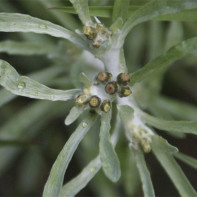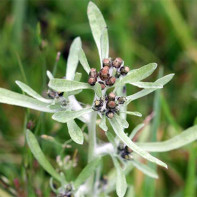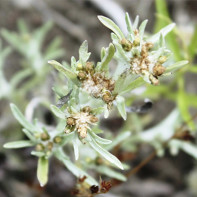Wheatgrass: therapeutic properties and contraindications
Wheatgrass is a popular medicinal plant, which contains a complex of active ingredients that can help improve the body safely and without side effects. Wheatgrass is used in non-conventional medicine as part of collections, as well as a separate medicinal plant that can restore the body even in severe conditions.
- Chemical composition
- How it looks and where it grows
- Types
- Gathering and storage
- Therapeutic properties of wheatgrass
- For Women
- For Men
- Wheatgrass in traditional medicine
- Tuberculosis
- Varicose
- Prostatitis
- Women's Health
- Digestive System
- For Headaches
- For IBS
- Insomnia
- For Hypertension
- From fungal infections
- Kinds of medicinal compositions
- Infusion
- Infusion
- Decoction
- Ointment
- Oil
- Contraindications to use
Chemical Composition
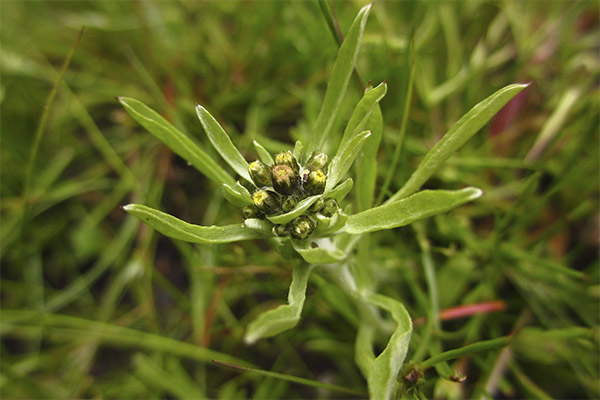
In terms of its chemical composition, wheatgrass is not inferior to many modern biologically active supplements. The herb contains a full complex of vitamins and minerals, presented in a digestible form, in high concentration. The plant retains rutin, folic acid, vitamin C, tocopherol and retinol. Minerals are important for harmonizing the functioning of organs and systems. The herb contains the following types of macronutrients and trace elements:
- iron;
- silicon;
- zinc;
- magnesium;
- potassium;
- sodium;
- calcium.
There are also special substances that can replace potent drugs. In the herb and flowers of the plant are present in the maximum concentration of such components:
- alkaloids (6 types);
- carotenoids;
- essential oils;
- flavonoids;
- antioxidants;
- bitterness.
The plant contains 2 poorly studied alkaloids, so science does not confirm the complete safety of the plant. But years of experience in the use, as well as studied properties indicate that it is absolutely useful and safe, if used correctly and in the absence of contraindications.
How it looks and where it grows
Wheatgrass is one of the most common plants in regions with cold and temperate climates. It is widespread throughout the Eurasian continent, in some regions it is cultivated industrially. But more often it is seen by gardeners, especially those whose plots are located on the banks of rivers and other bodies of water.
This is what the plant looks like:
- The height of the shrub - up to 35 cm;
- The stems are branched, foliated;
- leaves are sparse, thin, lanceolate linear in shape;
- Flowers small, aggregated in ovate-shaped inflorescences;
- fruits are miniature seeds.
The advantage of the plant is that it blooms long enough to allow three months of harvesting, from early June to the end of summer. Wheatgrass is often found in vegetable gardens, where it is actively propagated as a weed. If no toxic chemical fertilizers are used in the cultivation of vegetable crops, it is possible to pull weeds and dry them for medicinal use.
Species
The genus wheatgrass is represented by 14 species, but most of them are rare, found in the wild in countries with warm climates. In the whole territory of the Russian Federation and neighboring countries, only two varieties are considered the most widespread.
- Wheatgrass (marsh wheatgrass) is a small herbaceous plant with a pronounced medicinal effect. It is this species that is most common and suitable for medicinal use.
- Forest wheatgrass is a similar species, preferring the forest area for growing. The plant has similar botanical characteristics, but it is slightly taller. It also has medicinal properties.
You can harvest these two varieties and use them for therapeutic purposes. Both are good for coping with hypertension, diseases of the urogenital system, hormonal and nervous disorders. Wheatgrass is beneficial for the health of the respiratory system, as well as gently cleansing the body of toxins and impurities.
Gathering and storage
Prepare the raw material in the season when the phase of active flowering begins. During this period, all parts of the plant accumulate the maximum dose of components that promote recovery. It is necessary to be guided by the following rules:
- Choose a safe, non-toxic place, away from landfills, highways, factories.
- Cut off all the ground part, almost by the root (it is not necessary to pull out with the rhizome).
- The cut bushes should be transported carefully, so as not to crumple.
- Before drying, do not wash the grass, but simply sort it from debris, shred it, and spread it out to dry on a clean, dry cloth or paper.
- When the herb is finally dry, pack it in jars.
The finished collection can retain its medicinal qualities for up to two years. But it is necessary to organize the most favorable storage conditions - no humidity, mold, extraneous flavors. It is important that the raw material is always in a hermetically sealed container.
Therapeutic properties of wheatgrass
Wheatgrass is best known in folk medicine as a hypertensive herb. This is simply the most sought after and pronounced medicinal property of the plant - it is capable of instantly lowering blood pressure. Alkaloids act directly on the nervous system as relaxants, leading to the relief of spasms. They also relieve the tension of the walls of blood vessels and capillaries, which leads to a decrease in blood pressure. For the prevention of hypertensive crises, these properties are used, as well as a diuretic effect. With regular intake, frequent exacerbations can be avoided.
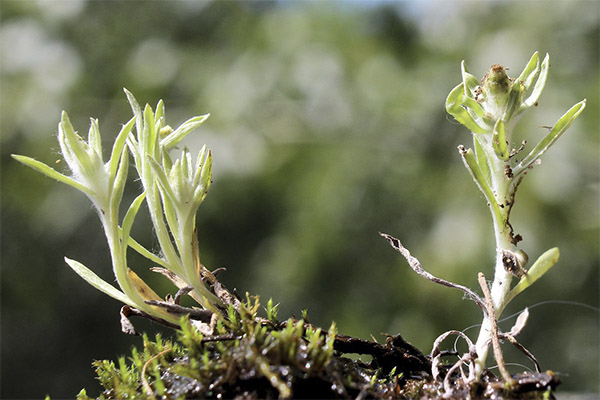
But the ability to help with hypertension is not all. Wheatgrass has such therapeutic properties:
- eliminates inflammation;
- Removes excess fluid and toxins from the body;
- Stimulates the function of the digestive organs;
- Increases the production of gastric juice, improves appetite;
- Normalizes hormonal background;
- beneficial effects on reproductive function;
- Relieves headaches and helps with migraines;
- promotes healing of stomach and duodenal ulcers;
- Improves liver function; renews this organ;
- Reduces the activity of cancer cells and tumors;
- stabilizes the functioning of the nervous system, calms, and normalizes sleep.
Hormones contained in the medicinal plant contribute to the maintenance of women's and men's health. But they have different effects on the body depending on gender.
For women
It is impossible to overestimate the benefits of wheatgrass for the female body. This herb is one of the few that help effectively cope with hormonal problems and poor health during menopause. Wheatgrass helps to cope with bad feeling and pain during menstruation, as well as normalizes the cycle if there was a failure due to stress or fatigue. Thanks to wheatgrass, you can quickly cope with inflammation of the ovaries, candidiasis, as well as relieve inflammation in infectious diseases of the genitourinary tract.
For men
Men also benefit from the use of wheatgrass for recovery. It helps fight problems such as:
- prostatitis;
- urinary tract infections;
- varicocele;
- sexual dysfunction.
Wheatgrass is part of a complex collection, preventing the development of impotence. It supports not only the hormonal background, but also stimulates the blood supply to the tissues of the reproductive organs. Due to the rich content of antioxidants, it eliminates the threat from free radicals, prevents the development of common types of prostate cancer.
Wheatgrass in folk medicine
In alternative medicine, there are dozens of recipes developed by herbalists and specialists in herbal medicine. They are created taking into account the peculiarities of each disease, tested by centuries of experience. Reliable and proven disease treatment regimens using wheatgrass are described below.
Tuberculosis
In the old days, wheatgrass was used in the treatment of lung diseases. This plant produces several healing effects at once:
- eliminates the cough and inflammatory process in the lungs;
- Normalizes respiratory function;
- removes excess sputum by first liquefying it;
- relieves spasms.
But in the treatment of tuberculosis this herb is especially valuable, because it heals foci of infection, prevents pulmonary bleeding in the open form. In the closed form, it promotes rapid recovery, blocks the ability to reproduce in pathogens, thereby preventing the spread of infection. In addition, the herb contains vitamins and active substances necessary to improve immunity. To use the healing potential of the plant, you can take the following recipe:
- 20 g of grass to steep 1 l of boiling water;
- Infuse for 2 hours, cover;
- Strain into a clean container and drink three times a day for half a glass.
The infusion is best taken before meals. To enhance the effect of using wheatgrass, it can also be insisted on alcohol. This version contains more antibacterial and regenerating components. Take 1.5 tablespoons of dry herbs for 100 ml of alcohol. In the process of infusion shake the mixture periodically, so that the liquid can draw out of the plant to the maximum all the healing power. Treat tuberculosis with a tincture for 3 months, taking 10 drops 3 times a day.
Varicose veins .
With varicose veins, you can use several therapeutic techniques at once, combining them or practicing them separately.
- Baths for problem areas with the infusion of the herb - 1 cup of raw materials for every 5 liters. Time of procedure - 20 minutes, repeated every day for 2 weeks.
- Oil extract rubbed into problem areas every day for 20-30 minutes before bedtime. The main thing is that after the application of the remedy, the legs were at rest.
- You can also use an alcoholic tincture for compresses, but not more than once a day. You need to put pieces of bandage or gauze soaked in alcoholic tincture on the affected areas. The duration of the procedure should not exceed 15 minutes.
To supplement the result of the local application of remedies based on wheatgrass, you can also take oral medicines from this healing plant. Tea, water infusion will do. You need to drink 200 ml of tea or 100 ml of tincture every morning, in severe cases even before going to bed. If varicose veins began to give complications, and thrombosis joined it, it is necessary to immediately stop taking herbs and consult a doctor, because surgical treatment will be required.
Prostatitis
There is one very ancient recipe that has been passed down from generation to generation. You can use wheatgrass in this form to treat prostatitis and other problems related to the male reproductive system. The recipe is very simple to prepare, but you need to take care in advance about the preparation of raw materials.
To prepare a healing tincture that returns male strength, you need to take not the grass and inflorescences of the plant, but its roots. Boil them in cow's milk for 10 minutes, toast at a minimum temperature. Then insist for 2 hours, and then drink 100 ml 2 times a day. You need at least 30 days to recover.
You can not complicate the task, and prepare an ordinary aqueous infusion. To do this, you need to take 2 tablespoons of grass, steep in a thermos, pouring 500-600 ml of boiling water. Take this infusion, when it cools, 30-40 ml, at least 2 times a day.
Women's health
To restore female reproductive health, you can use an aqueous infusion of wheatgrass, combine this plant with other herbs and even oils, which also have a positive effect on this area. There are three popular recipes that can be used.
- A mixture of linseed, red brush, and wheatgrass is boiled with boiling water. Take 300 ml of water for 1 teaspoon of the collection. Infuse for 30 minutes and drink in 3 drinks. The course is up to 30 days.
- Boil in a kettle linden blossom, wheatgrass, hop leaves (not cones, they give a strong drowsiness). Drink a cup of herbal tea on an empty stomach. Repeat every morning for 30 days.
- Pour vodka (0.5 liters) 50 g of the collection, infuse for 2 weeks. Strain and use 10 ml every morning for 2 weeks, and then after a break of 30 days repeat the course.
There are recipes that use other herbs. Before you start taking them, you should familiarize yourself with the contraindications and find out whether the body will not react to them with an allergic rash.
Digestive System
Wheatgrass is effective for stomach ulcers, gastritis and colitis, as well as improving the functioning of the digestive system. To treat the stomach and intestines, it is better to use an aqueous decoction. It can be prepared at once for several days. Boil 2 tablespoons of the herb in 1 liter, infuse and pour into a container with a lid. There is an important nuance - the decoction should be stored in the refrigerator, but before each use warm up to 30-35 degrees each portion. Cold drinks are too dangerous for the stomach.
With gastroenterological problems, it is recommended to drink the decoction together with a therapeutic diet, which is selected individually. In any case, at least 4 meals a day will be shown, which means that the decoction will have to drink the same number of times. You need to dose it correctly - no more than 50 ml per reception.
For headaches
Migraines and headaches can be relieved even without pain pills, but for this purpose you need to use wheatgrass. The advantage of this plant is that you don't even always have to drink it to deal with headaches. There are 3 ways to use the herb to relieve headaches.
- You can take a small amount of oil prepared on the basis of wheatgrass, rub it on the temples and lie down for 10-15 minutes. While the oil is absorbed, you can gently massage the temples with circular motions.
- If there is a vodka tincture in the house, it can be used for compresses for headaches. But do not take the tincture in pure form, it must be diluted with water in a ratio of 1:1. In the resulting solution, soak a clean handkerchief and place it on the forehead. If the pain is localized in the back of the head, the handkerchief should be placed there.
- You can prepare a tea for a headache. Take melissa, dill seeds, wheatgrass, peppermint. Boil 1 teaspoon with boiling water (1 cup), infuse for 3 minutes and drink in small sips.
Wheatgrass is an alternative, safe remedy that can replace pills for headaches.
When VSD.
Vascular dystonia is one of the most mysterious diseases, which has not been fully studied by medicine. Therefore, effective drugs that would eliminate at least the symptoms of this disorder do not yet exist. But wheatgrass can be successfully used for the correction of IBS. You can use it once or periodically take courses of treatment. The herb:
- eliminates the somatic manifestations of IBS;
- relieves headaches;
- reduces anxiety, reduces the risk of panic attacks;
- Normalizes the functioning of the autonomic nervous system.
Once in case of IBS, you can take away the feeling of ill health with an alcohol or vodka tincture. The first version is used in an amount of 30 drops per glass of water. Vodka tincture should be drunk 20-30 ml at a time. For long-term treatment, an aqueous tincture is used, ½ cup 2 times a day.
With insomnia
It is quite common to use wheatgrass as a remedy for insomnia. The effectiveness of this plant is due to the presence of trace elements that calm the nervous system, as well as hormones that normalize the functioning of the parts of the brain responsible for sleep. This plant also contains alkaloids that give a mild sleeping effect. Wheatgrass can be used occasionally, if there is no chronic insomnia. You just need to make a tea - brew a teaspoon of grass, infuse 3 minutes and drink with honey or sugar 1 hour before going to sleep.
With serious sleep disorders, insomnia, panic attacks recurring at night, you can use wheatgrass as a course. There are several regimens of application:
- alcoholic tincture - 20 drops 1 hour before sleep;
- water tincture - ½ cup 1 hour before going to sleep.
In addition, you can use wheatgrass as part of herbs for sachets. Take a small piece of light, breathable fabric (linen or cotton), sew into it a mixture of thyme, melissa, lavender, St. John's wort, hop cones and wheatgrass. This pillowcase should be placed in a pillowcase. Essential oils will evaporate and enter the body during breathing. Such an aromatic sachet will speed up falling asleep and improve the quality of sleep.
From hypertension
For arterial hypertension, wheatgrass is used even in traditional medicine. This herb is known as a highly effective and fast-acting remedy, which medics recommend that all hypertensive people keep in the house to protect themselves from sudden attacks. A standard recipe that helps with hypertension:
- 20 g of the herb to brew in a thermos 800 ml of boiling water;
- insist 4 hours;
- Drink 100 ml 2-3 times a day.
If hypertension is difficult to treat, there are frequent vasospasms, the pressure rises even at rest, it is better to prepare an alcoholic tincture, which will act quickly. This is necessary for emergency situations, when you need to urgently lower the pressure safely for the body. For the tincture it is advised to take the apical parts of the plant, dry them, chop them with scissors and put in a dark bottle. For 250 ml of alcohol take 3 tablespoons of the collection. Pour and infuse for 21 days. Take the finished tincture only at attacks of 1 teaspoon, drinking plenty of water.
For fungal infections.
Studies have shown that wheatgrass has essential oils and alkaloids, as well as plant components that are effective in fungal lesions of the skin and mucous membranes. The plant is equally effective against different types of foot skin fungus, vaginal candidiasis and fungal lesions of the mucous membranes of the oral cavity. The method of use differs in each case.
- To treat foot and nail fungus, you need to use wheatgrass externally, making warm baths. Take 100 grams of the herb for 5 liters of water, brew and cool, and then use it for baths. The water should not be allowed to be hot - this may activate the infection and not have a therapeutic effect.
- For vaginal candidiasis, use a strong water decoction for douches and intimate hygiene. Boil and boil for 3-5 minutes 2 tablespoons of the herb in 400 ml of water. Use 2 times a day for douches. For hygienic procedures dilute the decoction with boiled water in half.
- When fungal lesions of the mouth (stomatitis) should use the infusion to rinse the mouth. Boil 2 teaspoons of the herb with a glass of boiling water, infuse for 1 hour, and then use to gargle after each meal. The ideal is 4-5 times a day for 6-8 days.
The advantage of wheatgrass over antifungal drugs is that it does not give such dangerous side effects as reduced immunity, liver damage, nausea. Externally, baths can be used even in children from 6 years of age.
Types of medicinal compositions
To use wheatgrass for medicinal purposes, you need to know how to prepare the medicine correctly. Depending on the method of preparation will be different and the properties of the resulting medicine. It is necessary to select suitable recipes for each disease. But there are several traditional, universal recipes that can be used for all occasions.

Infusion .
To prepare a therapeutic infusion, you can choose one of two ways. The first is to prepare the remedy in a closed container, insisting for 2-3 hours. The second option - making an infusion in a thermos, where a constant temperature of the liquid is maintained. Insist such a remedy should be 3-4 hours. The proportions for 1 liter of water - 25 grams of grass. Boil the raw materials and close in a thermos or other container with a lid.
For the infusion to be truly healing, you need to soak it for at least 2 hours, and then drain it, straining through a sieve or clean gauze. Aqueous infusion cannot be stored for too long. The maximum time is 3 days.
Tincture
The most concentrated version of all the dosage forms is an alcohol or vodka tincture. You can take as a base pure alcohol (medical), moonshine or store vodka. To prepare on vodka, you need to take a glass of the collection for 500 ml, on pure alcohol - 1 tablespoon per 100 ml.
Prepare the tincture in a bowl of dark glass or completely opaque container. The fact is that exposure to ultraviolet rays can spoil the tincture, so you need to keep it away from light.
Decoction
You can cook the decoction on a small fire in a pot with a thick bottom, or you can boil it in a water bath. The decoction is better to prepare at once for several days. Take 2 tablespoons of grass for 1 liter of water. Pour it in a saucepan with cold water, and then slowly bring it to a boil and boil for 15 minutes.
The finished broth should not be strained immediately, you need to let it stand for at least 40-50 minutes, and then pour into a jar through a sieve. Drink the decoction 50 ml, at least 2-3 times a day. Since this version of the medicine is quite concentrated, you need to reduce the treatment time to 2 months. You can continue taking decoction of wheatgrass only after a break.
Ointment
To prepare an ointment from wheatgrass, you need to find a suitable base. You can take regular baby oil or buy a ready-made base for the emulsion. They are sold in stores where there are products for the creation of organic cosmetics with their own hands. But people more often for the preparation of herbal ointments use a natural base - pig's melted fat. Recipe and cooking technology:
- In a deep, thick-walled container, melt 200 g of pig fat.
- When it becomes liquid, add 1 cup of dry, chopped herbs.
- Boil under a closed lid on the lowest heat for 1.5 hours.
- Allow the remedy to stand for a while, so that it is not too hot.
- Carefully pour into a jar through a sieve so that parts of the plant do not get into the ointment.
- Wait until it cools completely and put in the refrigerator the resulting ointment, first closing it with a lid.
The ointment is for external use only. It can be applied to mild burns, wounds and sores. It helps with insect bites, allergic reactions, as well as furunculosis and wounds that take a long time to heal.
Oil
Oil extracts can be used externally and internally. With the help of plant oils, it is possible to obtain a valuable extract, which will contain the active ingredients and fatty acids. There are two ways to prepare oil based on wheatgrass.
- Take 250 ml of vegetable refined oil, heat it to 70 degrees on the stove. Pour 50 grams of herbs, and then simmer, without increasing the temperature under a closed lid for 2 hours. For convenience, the mixture can be cooked in an oven. After cooling, strain the mixture and pour into a bottle of dark glass.
- The second way is a cold oil infusion. Its preparation requires more time, but in such a means will be a higher concentration of active ingredients. Pour into a bottle of 100 grams of grass, pour 400 ml of vegetable oil and cover. Infuse for 30 days, then strain and use.
Oil of wheatgrass is fragrant, softens and heals the skin, helps with varicose veins, can be used for anal fissures, hemorrhoids, as well as to soften the skin of the feet with a tendency to cracking and peeling.
Contraindications to use
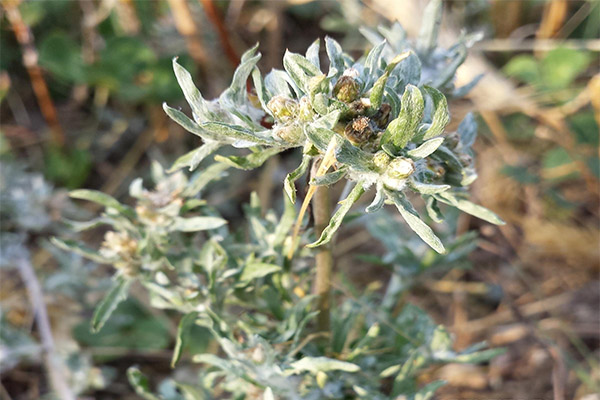
The use of wheatgrass is not possible in all cases. There are diseases in which the useful potential of the plant can be detrimental. This herb is strictly forbidden for such diseases:
- Arterial hypotension (low blood pressure);
- thrombosis;
- aortic dissection;
- heart attack and stroke in the acute stage;
- Severe forms of heart failure;
- Allergy to the plant.
It is also strongly contraindicated to use the plant during pregnancy and lactation, because it can adversely affect the health of the mother and child.
You should not abuse wheatgrass - you need to clearly follow the recommendations regarding the dosage and patterns of use. Only proper use will help to become healthier and get rid of a number of diseases. Before you decide to treat the herb, you need to consult a doctor and undergo diagnostics to exclude the presence of pathologies and diseases in which this plant can harm.
«Important: All information on this site is provided solely for introductory for informational purposes only. Before applying any recommendations, consult a health care professional. specialist. Neither the editors nor the authors shall be liable for any possible harm caused by materials."


